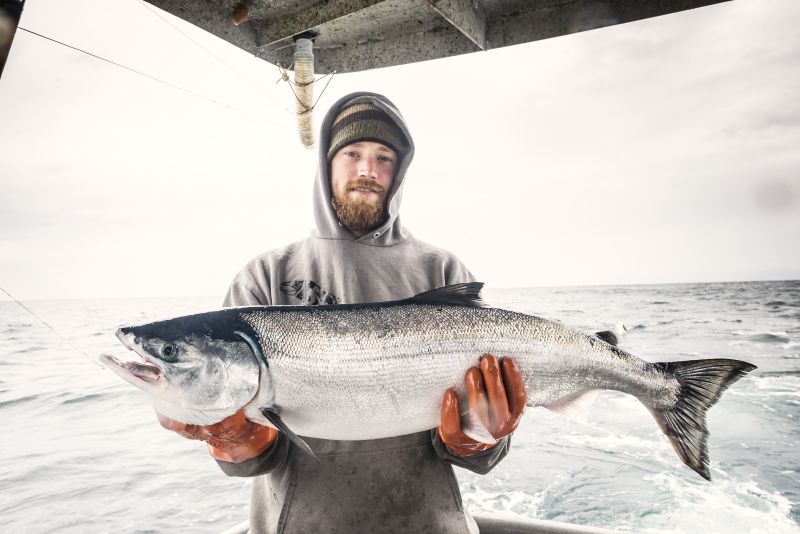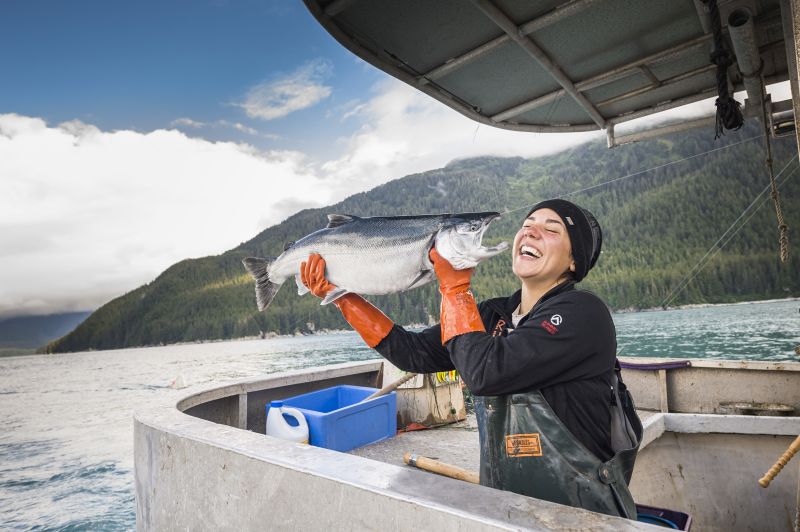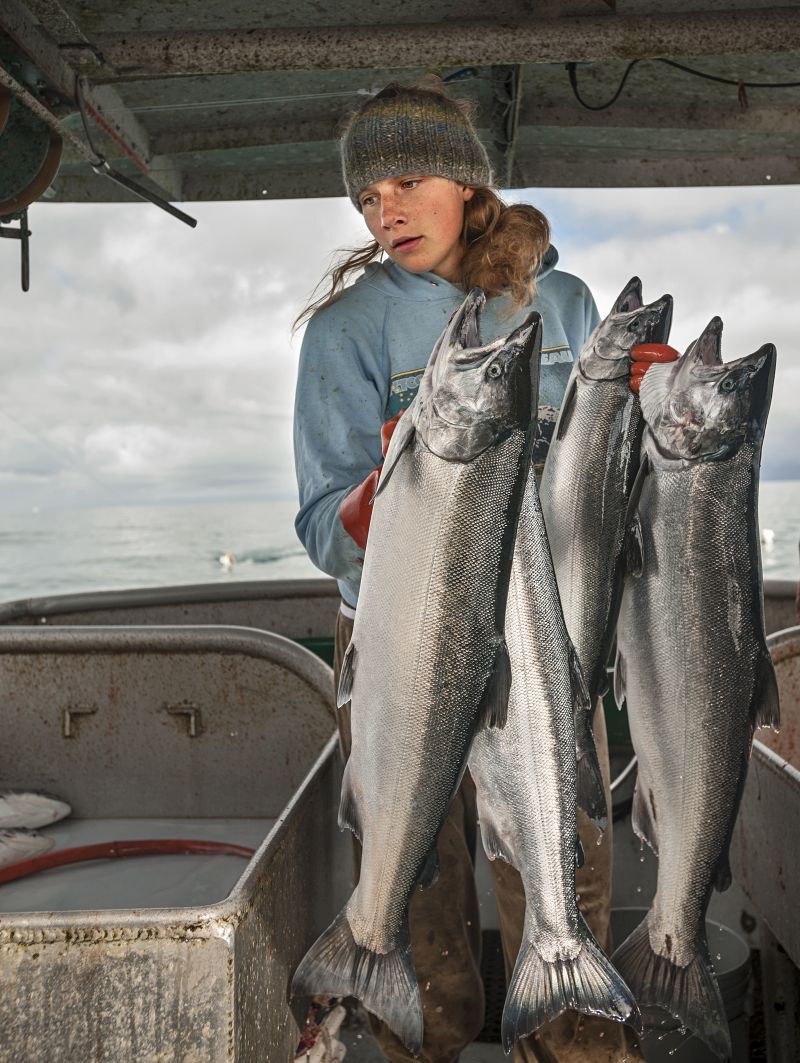What's the catch?
High-quality, perfect traceability and sustainability are the main attributes that are perfectly describing Alaska's seafood industry, according to Ashley Heimbigner and Anastasia Talalay, representatives of the Alaska seafood marketing Institute. The organisation is going to have a stand at Indagra Food & Carnexpo trade fair in Bucharest, hosted by Romexpo on 30 October- 03 November this year.
Follow the interview to find out what are the products that sell best and see how the sector is responding to current challenges in the global market.
1. What are your expectations for the EU market and what are the advantages that you see here?
For Alaska seafood, the EU market differs depending on the region. For example, in the Northern Europe, especially in the UK, the brand of Alaska Seafood is very strong and well known as well as trend for the sustainable seafood. That is why different kinds of wild Alaska salmon are popular there. In Southern Europe, the fish consumption is much higher than European average: compare 24 kg per capita in Europe and 57 kg per capita in Portugal. Besides, there are some traditional popular seafood products such as salted cod, so that is a perfect market for Alaska Pacific cod. As for Romania, the fish consumption here remain quite low - only 7 kg per capita, but it is slowly increasing, partly due to the trend for healthy lifestyle and diet, partly, due to the fact that Romania´s economy and incomes are growing, and the modern retail chains and HoReCa are developing. From one hand, people are getting more conscious about what they eat, and from the other hand, they have more possibilities to choose the high-quality products.
2. Convenience food is gaining field in almost every developed market. What are the innovations that are increasing seafood exposure to this segment?
Alaska seafood companies keep launching value-added products, more convenient to use. For example, there is a number of Alaska pollock products, designed specifically for HoReCa, such as diamond cut piece and some products adapted to restaurants skillets and pans. All this allows optimizing the cooking process in the kitchen and reducing waste. One of the innovations in convenience food for the final consumer is seafood protein noodles. Protein noodles align themselves with today’s most notable seafood market trends, including high protein/low carbohydrate and gluten-free diets, clean label surimi seafood, sustainability?certifications, and ready meals on the go. Today’s consumers are interested now more than ever in alternative ways to incorporate clean sustainable protein into their diets, and they can easily do it with protein noodles.
3. How much of the seafood produced and processed in Alaska remains in the domestic market and how much is exported?
Depending on the harvest volume of certain species, 60 – 75% of Alaska Seafood is exported each year, however, the United States remains the largest single market for Alaska seafood.

4. What are the main markets for export right now and what products do you ship there?
The main markets for Alaska seafood export remain:
• China imports from Alaska almost all kinds of products, most popular being chum and pink salmon, salmon roe, herring, Alaska pollock, including fillets, H&G and surimi, Pacific cod, lingcod and Atka mackerel, sablefish, sole, mish meal, and snow crab;
• Japan is a very important export market for Alaska seafood, importing a lot of premium and high quality products such as king crab, sablefish, sockeye, and salmon roe and pollock roe, which is considered to be a premium product there as well as high volumes of table fish, including chum, herring, Alaska pollock, surimi, rockfish, Atka mackerel, and sole;
• The European market remains one of the main destinations for Alaska seafood, but the assortment differs depending on the region. For example, Northern Europe imports all kinds of wild Alaska salmon, Alaska pollock fillets and surimi, Pacific cod, and mince; Southern Europe - chum, Alaska pollock fillets and surimi, Pacific cod, and whitefish mince; Western Europe - chum and sockeye, Alaska pollock fillets, and surimi, Pacific cod; Central Europe - sockeye, coho, and pink, salmon roe, high volumes of Alaska pollock fillets and H&G, surimi, mince, and Pacific cod.
As for the Eastern European part, which Romania belongs to, the most popular species from Alaska here are pink salmon, salmon roe, Alaska pollock H&G and surimi. In Romania, you can find different kinds of wild Alaska salmon such as sockeye, chum and pink salmon, Alaska pollock fillets and salmon roe.
5. Sustainability and traceability are some of the major topics involving the food industry. How does the US seafood industry address these challenges?
Three main pillars of sustainable fisheries are: leaving enough fish in the ocean, respecting habitats and ensuring that people who depend on fishing can maintain their livelihoods. And Alaska fisheries are known as a world model for sustainability as it responsibly addresses all of these issues. Alaska is also the only state with a mandate for sustainable seafood written into its State Constitution.

So, how the system works in Alaska: first, scientists calculate the Acceptable Biological Catch, which is the maximum number of fish that can be sustainably caught. That is a very small portion of the total amount of fish. Then, fisheries managers determine the Total Allowable Catch, which the total amount of fish that can be harvested. This number is even smaller than Acceptable Biological Catch. Thus, the state of Alaska ensures that there will always be plenty of fish in the sea for future generations. Sustainable fisheries also include the protection of nature. In Alaska, there are more than 40 Marine Protected Areas, covering hundreds of thousands of square kilometers in the waters off Alaska to safeguard this sensitive habitat from human activity. And fishermen are also protected by the many laws and regulations. Especially, it concerns the native Alaska people who have special fishing privileges and benefits.
As for the traceability, all Alaska seafood suppliers must conform to applicable national and international laws governing food producers. Alaska seafood suppliers go a step beyond and also conform to the Alaska Seafood Marketing Institute´s Traceability Standard. This way, a restaurant or supermarket can always check to make sure the seafood they receive is wild and sustainable from Alaska. So far, it concerns mostly the US market but the system is developing and there are also responsible European importers.
Alaska seafood species are also independently certified sustainable through third-party certification schemes meeting the highest global standards including the Marine Stewardship Council (MSC) and the Alaska Responsible Fisheries Management (RFM) program.
6. Do you have any programs to address the plastic pollution of the oceans?
In Alaska, since 2006, the NOAA (National Oceanic and Atmospheric Administration) Marine Debris Program has worked to conduct debris research, removal, and prevention, directly funding different projects. There are also some governmental acts, protecting Alaska nature and marine animals and birds, such as whales, sea lions, otters. Including the Marine Mammal Protection Act, the Fur Seal Act, and the Magnuson-Stevens Fishery Conservation Act, which is the primary law governing marine fisheries management in U.S. federal waters. Since 1976, the Magnuson-Stevens Act has fostered long-term biological and economic sustainability of US marine fisheries.

7. What are the endangered species in the Alaskan waters and how many of those are still captured at this time? Do you see any potential ban for fishing in the next couple of years?
No Alaska seafood has been ever listed as endangered under the Endangered Species Act. In Alaska, state and federal agencies are responsible for enforcing sustainable fishing practices and laws. These include the Alaska Department of Public Safety´s Wildlife Troopers, the National Marine Fisheries Service Office for Law Enforcement, and the U.S. Coast Guard, among others. Fishermen and seafood processors are carefully monitored and controlled to make sure that everyone is following the rules and accurately reporting the number of fish that have been caught.
Biopower has just begun operating Brazil's first 100% biodiesel (B100) refueling point. The compa...

EFSA was asked to give a comprehensive overview of effective surveillance options and risk reduct...

"Today is a yellow weather warning with snow falling in Perthshire,” says Beth Alexander, Q...
